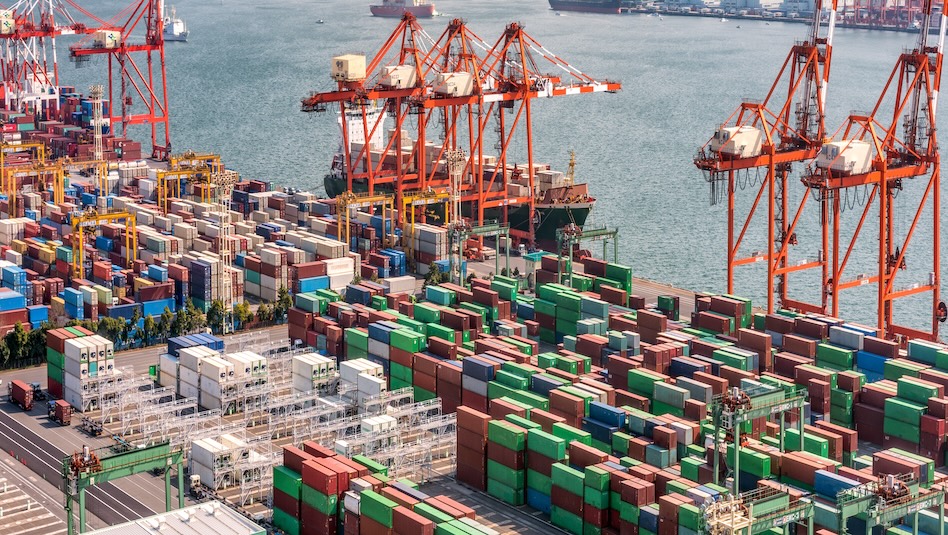




Philippines Trade Update: Exports momentum continues
 DOWNLOAD
DOWNLOAD

Quarterly Economic Growth Release: More BSP cuts to come
 DOWNLOAD
DOWNLOAD

Monthly Economic Update: Fed catches up
 DOWNLOAD
DOWNLOAD


External debt up 10% as of end-2024

The Philippines’ outstanding external debt rose by nearly 10% year on year as of end-2024, the Bangko Sentral ng Pilipinas (BSP) said.
Preliminary data showed the country’s external debt increased by 9.8% to USD 137.63 billion as of end-December 2024 from USD 125.39 billion in the same period in 2023.
However, the debt stock edged lower by 1.4% quarter on quarter from the record-high USD 139.64 billion as of end-September.
External debt refers to all types of borrowings by residents from nonresidents.
“The increase was driven primarily by net availments of USD 9.61 billion to address liquidity requirements of the public and private sector,” the central bank said.
BSP data showed public sector net availments amounted to USD 5.59 billion last year, while the private sector’s net availments reached USD 4.03 billion.
“The net acquisition of Philippine debt securities by nonresidents of USD 3.37 billion resulting from investor preference towards emerging market debt securities for most of 2024 as well as prior years’ adjustments of USD 634.76 million further contributed to the increase in debt stock.”
“Meanwhile, the negative FX (foreign exchange) revaluation of borrowings denominated in other currencies of USD 1.39 billion tempered the increase in debt,” it added.
This brought the external debt as a percentage of gross domestic product (GDP) to 29.8% from 30.6% in the third quarter. However, this was higher than the 28.7% posted in 2023.
The central bank said the external debt-to-GDP ratio remains at a “prudent” level.
“This improvement in the ratio was driven by the decline in external debt levels in conjunction with the Philippine economy’s 5.2% real GDP growth for the fourth quarter and 5.6% growth for the full year,” it added.
Meanwhile, the BSP attributed the 1.4% quarter-on-quarter decline in the debt stock due to the negative FX revaluation of borrowings denominated in other currencies.
It also cited the “net acquisition by residents of Philippine debt securities from nonresidents aggregating USD 835.33 million; and recorded net repayments amounting to USD 133.51 million.”
“During the reference quarter, the appreciation of the US dollar decreased the value of the country’s debt stock by USD 1.29 billion,” it said.
At the end of 2024, the peso closed at P57.845 versus the dollar, declining by P2.475 or 4.28% from its end-2023 finish of P55.37 against the greenback.
“The US dollar strengthened due to improved US economic performance, market perception towards Federal Reserve’s future policy path as well as expectations on the shift in US trade and investment policies under the then incoming administration.”
“The same underlying factors may have also triggered nonresidents to offload Philippine debt securities, further lowering outstanding external debt by USD 835.33 million,” it added.
Broken down, the private sector’s external debt slipped by 0.9% to USD 52.29 billion at the end of the fourth quarter from USD 52.76 billion at the end of the third quarter.
“The modest decline in private sector borrowings were driven by the net acquisition by residents of debt securities issued offshore aggregating USD 870.03 million,” the BSP said.
It also cited the negative FX revaluation of borrowings denominated in other currencies of USD 154.11 million and net repayments of USD 70 million, which offset prior periods’ adjustments of USD 313.98 million.
Public sector debt dropped by 1.8% to USD 85.34 billion as of end-fourth quarter from USD 86.88 billion as of end-third quarter.
This was due to the USD 1.44-billion negative FX revaluation of borrowings denominated in other currencies.
“Prior periods’ adjustments of USD 71.23 million as well as net repayments of USD 63.51 million further reduced the outstanding levels.”
The bulk or 92.9% of public sector obligations were from the National Government, while the rest came from borrowings of government-owned and -controlled corporations, government financial institutions, and the BSP.
The Philippines’ top creditor countries were Japan (USD 15.18 billion), Singapore (USD 5.06 billion) and the Netherlands (USD 4.55 billion).
The borrowing mix was composed mainly of US dollar-denominated debt (74%) followed by debt in Philippine peso (9.2%) and debt in Japanese yen (7.5%).
The central bank said other key external debt indicators were also still at “sustainable levels.”
The country’s gross international reserves (GIR) stood at USD 106.26 billion as of end-2024. This represented 3.81 times cover for short-term (ST) debt based on the remaining maturity concept.
“The debt service ratio (DSR) rose to 11.5% from 10.3% for the same period last year due to the higher recorded debt service payments.”
The DSR and the GIR cover for short-term debt is a gauge of the adequacy of foreign exchange earnings to meet maturing debt obligations.
Rizal Commercial Banking Corp. Chief Economist Michael L. Ricafort said the persistent NG budget deficit contributed to the rise in external debt.
“The budget deficit fundamentally led to more local and foreign borrowings and outstanding debt, despite increasing the share of local borrowings in the total borrowing mix to better manage foreign exchange risks entailed in external debt,” he said.
The NG’s budget deficit narrowed by 0.38% to P1.506 trillion in 2024 from P1.512 trillion in 2023. However, it exceeded the P1.48-trillion deficit ceiling set by the Development Budget Coordination Committee.
Moving forward, the share of external debt to the overall borrowing mix is expected to be reduced, Mr. Ricafort said.
“Some of the foreign borrowings in recent years were meant to diversify borrowing sources for the NG and to provide liquidity of global bonds in the international market,” he said.
In January, the NG raised USD 3.3 billion from the sale of 10-year and 25-year fixed-rate global bonds and seven-year euro sustainability bonds. It was NG’s first global bond offering for the year.
The government plans to borrow PHP 2.55 trillion this year, of which PHP 507.41 billion will come from external sources. – Luisa Maria Jacinta C. Jocson, Reporter
This article originally appeared on bworldonline.com





 By BusinessWorld
By BusinessWorld